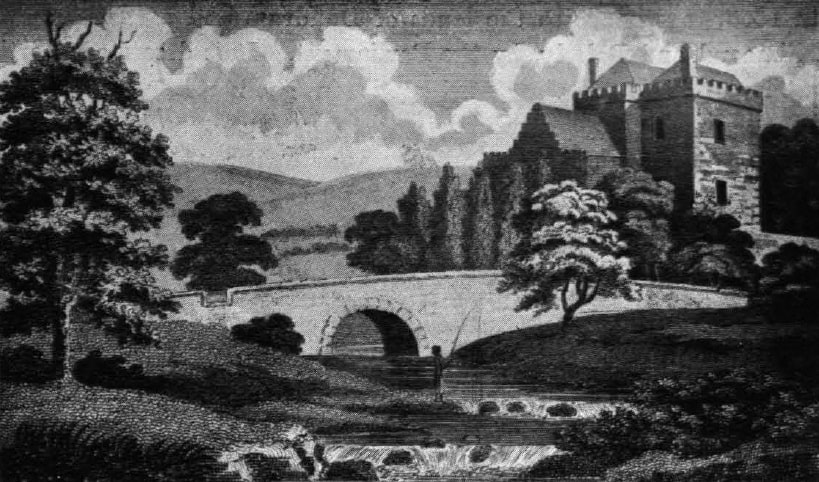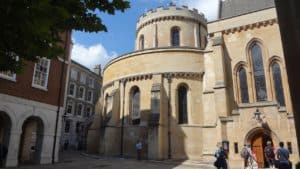Explore the Amazing Norman Dundrum Castle in Northern Ireland

Updated On: April 28, 2024 by Ciaran Connolly
Dundrum Castle is a Norman Castle in the town of Dundrum, outside Newcastle, on the Belfast road. The castle has seen plenty of action in its years. There was a known failed siege, and it has had improvements and extensions through its different owners’ times. It’s a stop off on Game of Thrones tours now and is an excellent place to spend half a day and picnic.
Table of Contents
Dundrum Castle Provenance
Castle Woods has been an important feature in the landscape above the village of Dundrum for hundreds of years. The woods, surrounding Dundrum Castle, are approximately 7.5 acres in size and were planted between 1820 and 1825 by the Marquis of Downshire, who followed the fashion of the early 19th-century demesne planting with its emphasis on mixing native, naturalised and exotic trees.
Considered to be one of Ulster‘s most evocative medieval ruins, Dundrum Castle was founded by the legendary Norman adventurer John de Courcy, following his invasion of Ulster in 1177. On the summit of a rocky hill, it provided a good vantage point for controlling commercial and military traffic along the east coast.

Dundrum Castle Architecture
De Courcy’s intention for the original castle had many aspirations regarding military defence. True! He may have had defences of the surrounding terrain and timber, but the stone curtain wall of the upper ward was probably built as early as the 1180s. As with other early enceinte (enclosure) walls, no towers existed. However, the defence was aided by covered walks with machicolations along the outside wall-head. An early timber hall may have been sited north of the castle’s right side.
Dundrum Castle was captured by King John in 1210 and remained Crown property until de Lacy was allowed to return to his Earldom in 1226. It was probably during de Lacy’s second tenure as Earl of Ulster that the twin-towered gatehouse, similar to the one at Pembroke Castle, was inserted into the curtain wall. It has a lopsided design with only one projecting tower to protect the approach along a narrow ramp from the southwest.
SEE ALSO: Castles in Northern Ireland
The stone curtain wall of the outer bailey is likely to have been built by the Maginnis family, who seized Dundrum in the late fourteenth century and held it intermittently until finally expelled by Lord Mountjoy in 1601. It was made over to the infamous Lord Cromwell in 1605 and sold to Sir Francis Blundell in 1636.

The Maginnis family retrieved Dundrum in 1642 but later lost it to the Parliamentarians, who dismantled the castle in 1652 after they withdrew their garrison. After 1660, the Blundells returned and built a gabled L-shaped mansion in the southwest corner of the outer bailey. This dwelling was ruined when the property passed to the second Marquess of Downshire in the early nineteenth century, though the trees on the hill were probably planted at this time. The castle and grounds were placed in State Care by the seventh Marquess in 1954.
Nowadays, under the management of the National Trust, the public enjoys accessing the woods for recreation, with steps, stiles, paths, and signage to enhance the visitor experience. The trail links into existing Down District Council Footpaths around Dundrum.
A Centre of Power and Intrigue
Over the centuries, Dundrum Castle played a central role in the political and military affairs of Northern Ireland. It served as the seat of the de Courcy family, who ruled over vast swathes of territory in the region, and as a symbol of their authority and prestige. The castle’s strategic location made it a coveted prize for rival factions, and it frequently changed hands during periods of conflict and upheaval.
One of the most infamous chapters in Dundrum Castle’s history occurred during the 16th century when it became embroiled in the power struggles between the English crown and the Gaelic lords of Ireland. In 1512, the castle was seized by Gerald FitzGerald, the Earl of Kildare, in a brazen display of defiance against English rule. This act of rebellion sparked a bloody conflict that would engulf the region for years to come, with Dundrum Castle at the heart of the fighting.
Despite numerous sieges and skirmishes, Dundrum Castle remained a formidable stronghold throughout the turbulent centuries of Irish history. Its sturdy walls and strategic position made it a difficult target for would-be conquerors, and it continued to stand as a symbol of defiance against foreign invaders.
Legends and Folklore
Like many ancient landmarks, Dundrum Castle is shrouded in a veil of legends and folklore passed down through generations. One of the most enduring tales recounts the exploits of a fearless warrior known as Red Hugh O’Donnell, who is said to have made a daring escape from the castle’s dungeons during the height of the Tudor conquest.
According to legend, O’Donnell managed to elude his captors by disguising himself as a servant and slipping past the guards under darkness. With the help of local sympathisers, he navigated the treacherous terrain of the Mourne Mountains. Eventually, he made his way to safety, earning legendary status as a symbol of resistance against English oppression.
Another popular legend associated with Dundrum Castle involves the ghostly apparition of a mysterious lady in white who is said to wander the castle grounds on moonlit nights. According to local lore, the ghostly figure is the restless spirit of a noblewoman who tragically lost her life during a siege of the castle centuries ago. Visitors to the castle often report eerie sightings and unexplained phenomena, adding to the mystery and intrigue surrounding this ancient landmark.
Historical Significance
Throughout its long and storied history, Norman Dundrum Castle has played a pivotal role in shaping the destiny of Northern Ireland. From its early days as a Norman stronghold to its eventual decline and abandonment, the castle has witnessed centuries of political intrigue, warfare, and cultural change.
During the medieval period, the castle served as a centre of power for the Anglo-Norman rulers of Ulster, who used it as a base for their military campaigns and administrative activities. Over the years, it passed through the hands of various noble families, including the Earls of Ulster and the powerful de Burghs.
In the following centuries, Norman Dundrum Castle fell into disrepair and was gradually abandoned, its once-mighty walls succumbing to the ravages of time and neglect. However, in recent years, efforts have been made to preserve and restore the castle, ensuring that future generations can continue to appreciate its historical significance.
Preservation and Restoration
Despite centuries of neglect and decay, Dundrum Castle is a testament to Irish heritage’s enduring spirit. In recent years, concerted efforts have been made to preserve and restore this architectural gem for future generations. Conservation projects have helped stabilize the crumbling walls, while interpretive signage and guided tours offer visitors insights into the castle’s rich history and cultural significance.
Today, Dundrum Castle serves not only as a tourist attraction but also as a living monument to the resilience of the Irish people and their enduring connection to the land. Its imposing silhouette against the Northern Irish skyline reminds visitors of the struggles and triumphs that have shaped the nation’s identity.
Visiting Dundrum Castle
Today, Dundrum Castle is a captivating reminder of Northern Ireland’s rich cultural heritage and turbulent past. Managed by the Northern Ireland Environment Agency, the castle is open to the public year-round, allowing visitors to explore its historic ruins and immerse themselves in the stories and legends that have shaped its legacy.
From its commanding hilltop perch, Dundrum Castle offers breathtaking panoramic views of the surrounding countryside, making it a popular destination for photographers, history enthusiasts, and outdoor adventurers alike. Guided tours and interpretive displays provide valuable insights into the castle’s history and significance, while special events and re-enactments bring the past to life in vivid detail.
For those seeking a deeper understanding of Dundrum Castle’s storied past, nearby attractions such as the Mourne Mountains, Tollymore Forest Park, and the historic town of Downpatrick offer additional opportunities for exploration and discovery.
Conclusion
Norman Dundrum Castle is a timeless testament to the resilience and ingenuity of past generations. From its humble origins as a medieval fortress to its enduring legacy as a symbol of Northern Ireland’s cultural heritage, the castle continues to captivate the imagination of visitors from near and far. Whether exploring its ancient ruins, delving into its rich history, or simply admiring its breathtaking vistas, visiting Dundrum Castle will surely leave a lasting impression on all who venture within its storied walls.
Other blogs that might interest you: Blarney Castle: Where Irish Myths and History Combine | Irish Agricultural Museum, County Wexford | Ireland’s Best Art Museums | 10 Irish Islands You Must Visit | 10 Charming Irish Towns You Must Visit






